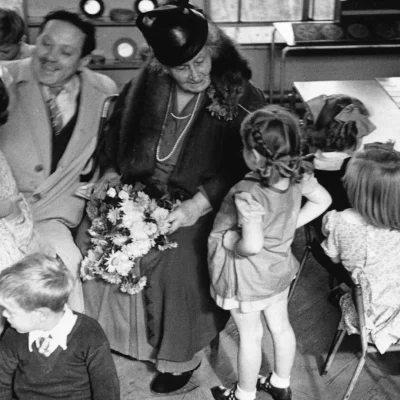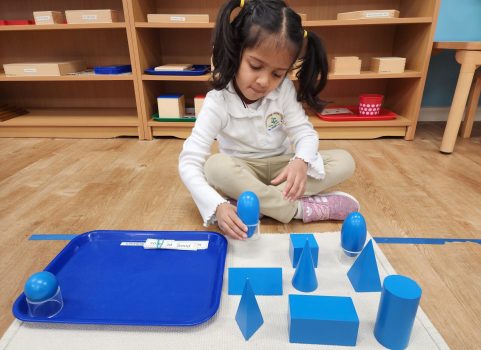Montessori education instills a love of learning in the child that will last throughout their whole life. The most basic principle in Dr. Montessori’s method is that the learning capacity of a young mind is great; she called this: “the absorbent mind”. By the age of three, the child has already laid down the foundations of his/her personality as a human being. This is why it is crucial for young children to be able to learn by exploration in a “prepared environment” – a Montessori classroom. A Montessori classroom will invite the child through learning materials which will help them develop into confident, capable, competent, and compassionate human beings.

Language

Language materials are designed to enhance vocabulary and explore both written and spoken language. Through language-based activities, such as the sandpaper letters and the moveable alphabet, children learn phonetic sounds and how to compose words phonetically. They progress using concrete materials to compose their own written work, read the work of others, and learn to communicate their unique thoughts and feelings.

Sensorial materials were designed by Dr. Maria Montessori to help children express and classify their sensory experiences. The purpose of sensorial activities is to aid in the development of the intellectual senses of the child, which develops the ability to observe and compare with precision. There are sensorial materials that focus on visual perception, tactile impressions, auditory sense, and olfactory and taste perceptions. Activities often include matching and grading materials that isolate the sense of sight, sound, touch, taste and smell.

Mathematics

Mathematical concepts are introduced to the child using concrete sensorial materials. Initial explorations with sensory materials encourage children to understand basic math concepts such as learning number recognition, counting and sequencing of numbers. Sensorial work prepares the child for a more formal introduction to mathematics, and the introduction of abstract mathematical concepts such as the decimal system and mathematical operations.

Practical Life
Practical Life activities help children learn how to care for themselves and their environment. These activities help the child to become more independent, leading to greater self-confidence, and the ability to face new challenges. Practical Life exercises include lessons in grace and courtesy, care for self, and care for the environment. The purpose of these activities is to enhance coordination, concentration, independence, and indirectly prepare children for writing and reading. Activities often include cleaning, food preparation, polishing and watering plants.

Culture

Culture
Cultural activities lead the child to experience music, stories, artwork and items from the child’s community, society and cultural background. The areas of geography, science, zoology and botany are all included in this area. A range of globes, puzzle maps and folders containing pictures from different countries all help to give the child an insight into different cultures. The culture area encourages children to develop their capacity for creation, and develop fine motor skills.
Sugar Land
Iowa Colony
Friendswood
18812 Noble Seven Ln, Sugar Land, TX 77479
directory@riverstonemontessori.us
2920 Meridiana Pkwy Iowa Texas director.ic@riverstonemontessori.us
